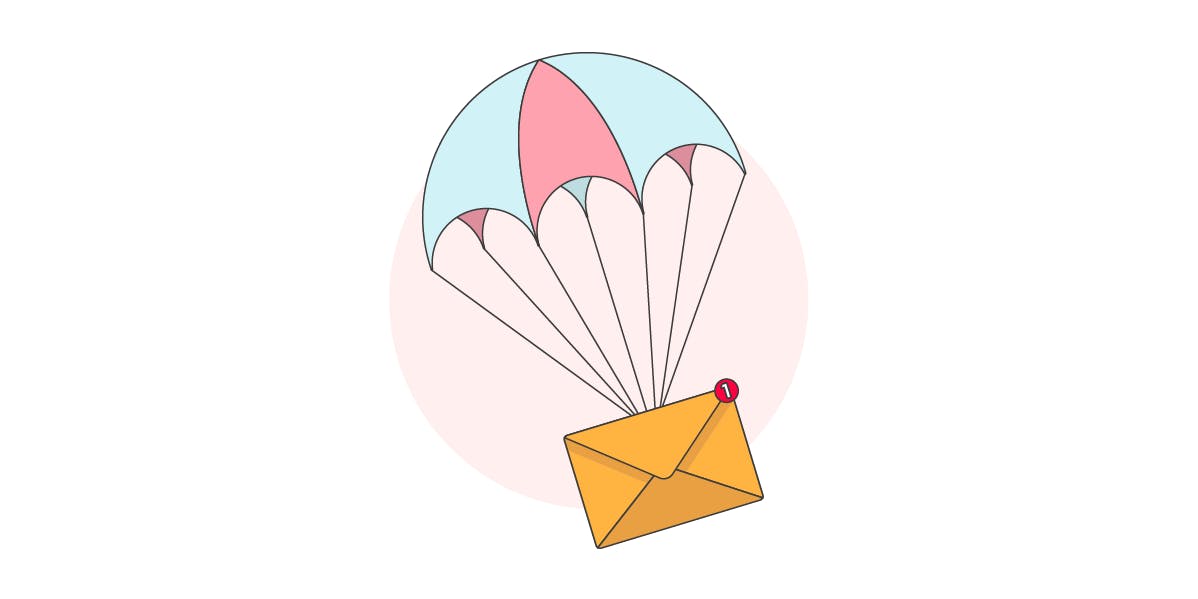Covid-19 has resulted in a surge in email marketing, as brands send updates on how they are responding to the pandemic, while also striving to stay front-of-mind for consumers.
But are brands making the most of the channel, and how can they ensure best practice during this time? Here’s a look at some recent email marketing stats, and a few examples of emails from brands during the pandemic.
More emails are being sent now than before lockdown
According to recent data from HubSpot, 44% more emails are currently being sent than before the lockdown began. Inken Kuhlmann-Rhinow, EMEA Marketing Director at HubSpot, commented on the surge: “With 44% more emails being sent than before the COVID outbreak, getting an email strategy right is essential and marketers need to be targeted, educational and empathetic. This is a difficult time, and simply being noisier to try and maintain consumer attention won’t work in the long run – it’s about growing better, not growing at all costs.”
Of course, this is a tricky balance to achieve, particularly as we are now so far into lockdown that the situation is pretty much the same as it was a few weeks back – there’s little need for business updates or news-style responses. Consequently, some brands, such as Zara, are now reverting back to business as normal, sending out email newsletters with standard content, such as what’s ‘new in’ this week.
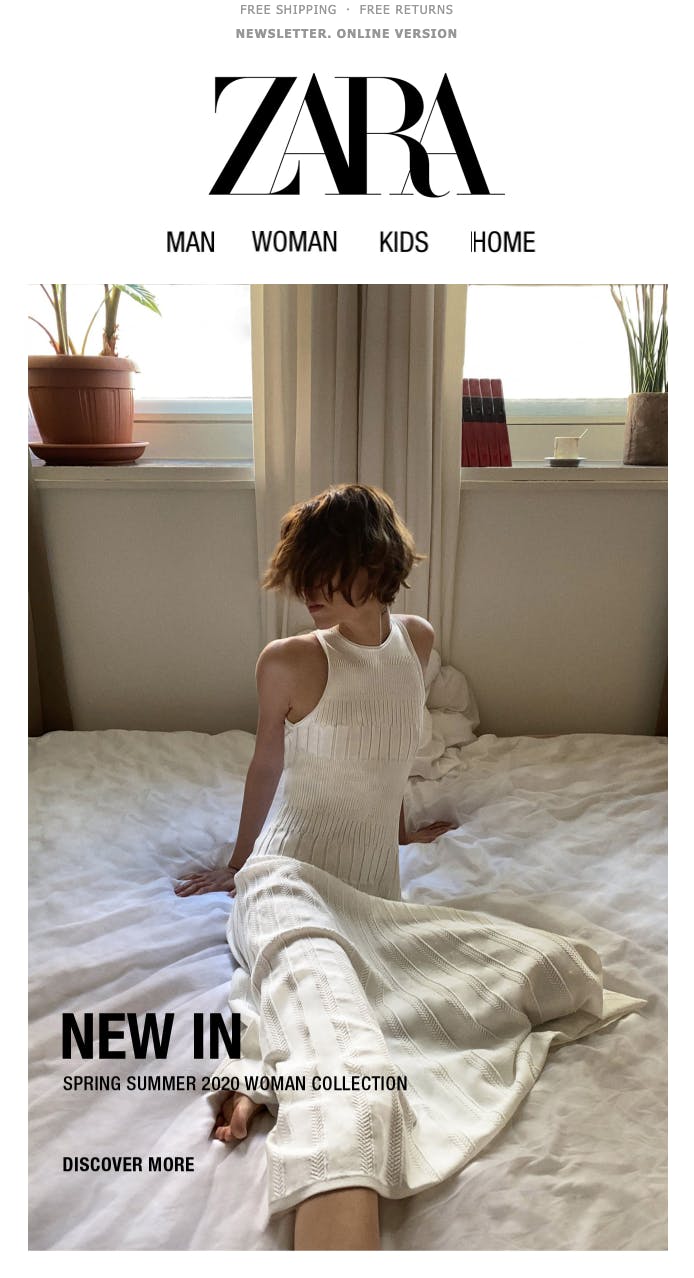
Brands like Zara have reverted to their usual email promotions as the pandemic wears on. (Image: Zara)
Other brands, like Fred Perry, are still referencing the pandemic, using email as an opportunity to reassure customers and inform them that its retail site is open as usual. This certainly feels more in tune with public feeling than Zara, and while Fred Petty’s email copy is a bit vague, it’s perhaps going to be more effective in engaging consumers than retailers who are now ignoring the situation entirely (which could come across as insensitive and out of touch).
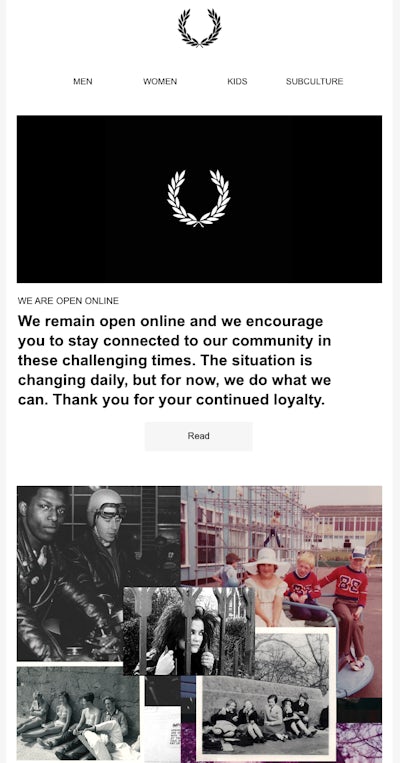
Fred Perry’s email copy sets out to reassure its customers that the brand is still operating online despite the “challenging times”. (Image: Fred Perry)
Instead of disregarding or directly addressing the pandemic, brands should now be focusing on ways to naturally weave in content that’s relevant and helpful in the current climate. This email from Bravissimo is a particularly good example, as the reference to Covid-19 is implied rather than overtly stated. As a result, the positive and uplifting content feels authentic and natural, rather than yet another email focusing on ‘unprecedented times’.
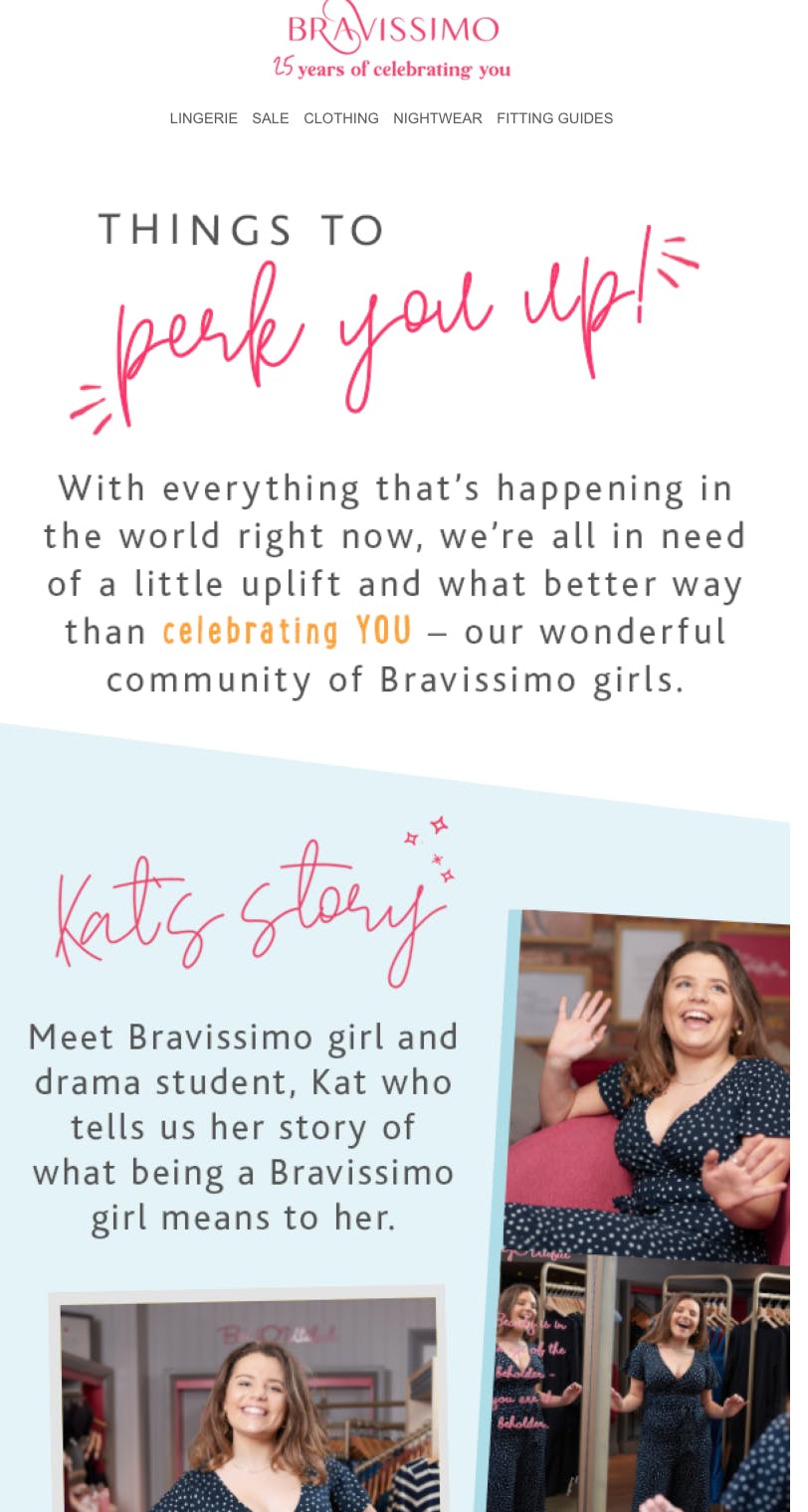
Bravissimo’s uplifting email messaging manages to feel natural rather than shoehorned in. (Image: Bravissimo)
This aligns with what consumers want to hear from brands. According to research by Twillo, 37% of consumers rank content with inspiration as well as strategies to stay safe as their top area of interest, especially when those recommendations are related to the company’s particular area of expertise.
This comes behind critical updates about what to expect from an individual company, which was cited by 53% of consumers. Again, with less need for this than when lockdown began, it’s likely that inspirational and empowering content will come to the forefront.
Open rates are on the up, too
We’re all receiving more emails than usual, but open rates have been higher, too. According to BounceX, email open rates have increased by an average of 25% week-on-week since the lockdown began, reaching 40% as of 14th April. With that said, some verticals have been struggling to convert, particularly fashion, which has seen an average 30% decrease in conversions. Overall, BounceX states that email marketing has seen a 1.5% increase in conversion and a 0.4% increase in revenue, which isn’t that much considering the high open rates.
BounceX has also revealed a pattern of higher open rates on certain days of the week. It found that email open rates fell to 21.93% on Saturday April 18th, before rising to 36.4% on Monday April 20th, and jumping again to 41% on Monday 27th April. Overall, this suggests that Monday is the most effective day of the week for email marketing during the pandemic. One reason for this could be that more people are using desktop devices at home, which tends to align with more time spent digesting long-form content. This is in contrast to mobile, which can result in more ad-hoc and distracted browsing behaviour.
Of course, other factors such as subject lines can also have a big impact on open and read rates. With consumers more likely to be interested in coronavirus-related news at the moment, it is perhaps tempting to use this in the subject line. However, it’s vital that brands do not wrongly capitalise on the situation, or entice consumers to open an email that is otherwise unrelated to what’s in the subject line. This could be a factor in low conversion rates.
As the pandemic first started to spread, the majority of brands used the subject line to directly or indirectly address the reader. Examples include: “A message from the team at ….” or “We’re all in this together”. Many brands, for example the Body Shop, created a sense of authority by using the name of an important figure from the business.
As time has gone on, however, more and more retail brands have shifted to promoting discounts in the subject line, which could also be enticing consumers to open emails rather than sending them straight to trash. It’s worth taking into consideration, however, that using too much urgency can be off-putting to consumers, as people are currently more likely to be sensitive to language that is anxiety-inducing. Phrasee, a company that uses AI and machine learning to generate email marketing copy, has banned specific phrases that might provoke worry or fear. Parry Malm, Phrasee’s CEO, told MIT Technology Review: “People don’t want marketing to make them feel anxious and fearful—you know, like, this deal is about to run out, pressure pressure pressure.”
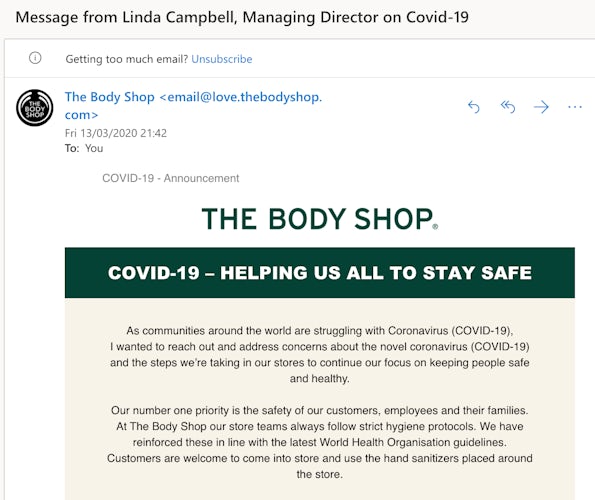
Many retail brands sent out their Covid-19 update emails under the name of an important figure from the business, to lend them additional weight and authority. (Image: The Body Shop)
According to data from Sparkpost, some sectors are also seeing high read rates, with the top three being airlines, cruises, and food delivery and meal kits. The latter category is particularly interesting, and highlights how certain sectors are capitalising on new consumer behaviour (and using channels like email to further their engagement).
Emails from food delivery apps and meal kit brands tend to include informative and contextual content that is relevant to consumers’ current lives (e.g. staying at home and what this means in the context of food). The below example from Pasta Evangelists is effective, using the promise of recreating a restaurant experience to pique the interest of consumers who are in lockdown at home.

Pasta Evangelists’ email invites readers to “recreate a ristorante” with the brand at home. (Image: Pasta Evangelists)
By contrast, other sectors such as credit cards and social networking platforms have increased email volume but have not seen an increase in open rates, which suggests that the content feels irrelevant or unimportant to users.
Going forward, brands that use email to build and strengthen relationships with consumers (rather than generate empty clicks) are likely to reap the rewards.

